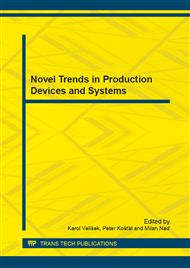p.405
p.411
p.417
p.423
p.430
p.436
p.442
p.448
p.454
Three Dimensional Finite Element Simulation of Sheet Metal Blanking Process
Abstract:
The shearing process such as the blanking of sheet metals has been used often to prepare workpieces for subsequent forming operations. The use of FEM simulation is increasing for investigation and optimizing the blanking process. In the current literature a blanking FEM simulations for the limited capability and large computational cost of the three dimensional (3D) analysis has been largely limited to two dimensional (2D) plane axis-symmetry problems. However, a significant progress in modelling which takes into account the influence of real material (e.g. microstructure of the material), physical and technological conditions can be obtained by using 3D numerical analysis methods in this area. The objective of this paper is to present 3D finite element analysis of the ductile fracture, strain distribution and stress in blanking process with the assumption geometrical and physical nonlinearities. The physical, mathematical and computer model of the process are elaborated. Dynamic effects, mechanical coupling, constitutive damage law and contact friction are taken into account. The application in ANSYS/LS-DYNA program is elaborated. The effect of the main process parameter a blanking clearance on the deformation of 1018 steel and quality of the blanks sheared edge is analyzed. The results of computer simulations can be used to forecasting quality of the final parts optimization.
Info:
Periodical:
Pages:
430-435
Citation:
Online since:
January 2014
Price:
Сopyright:
© 2014 Trans Tech Publications Ltd. All Rights Reserved
Share:
Citation:


